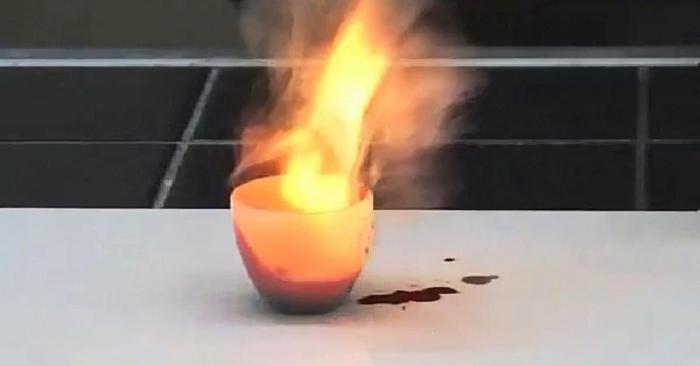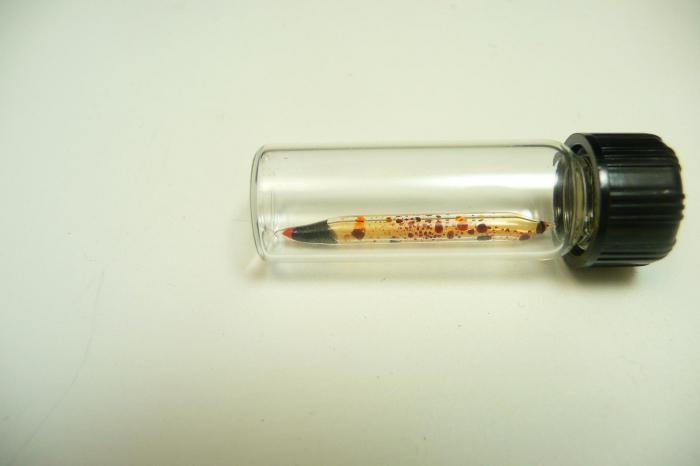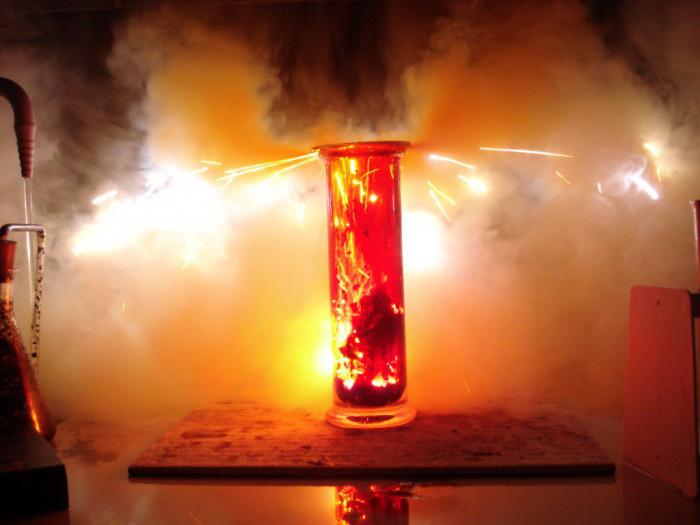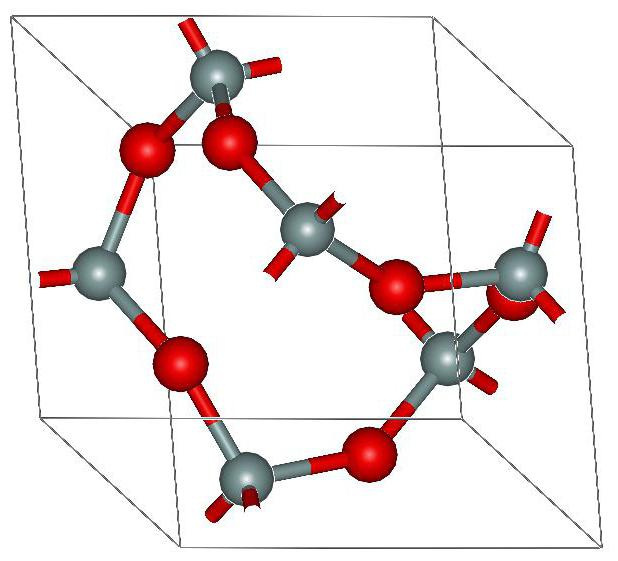Minimum and maximum degree of oxidation of bromine. Chemical properties of bromine
Among all the chemical elements, non-metals, there is a special series - halogens. These atoms get their name for the special properties that they exhibit in chemical interactions. These include:
- iodine;
- chlorine;
- bromine;
- fluorine.
Chlorine and fluorine are poisonous gases that havestrong oxidizing ability. Iodine under normal conditions is a crystalline substance of dark purple color with a pronounced metallic luster. It shows the properties of the reducing agent. And what does the fourth halogen look like? What are the properties of bromine, its compounds and characteristics as an element, and as a simple substance? Let's try to understand.

Bromine: general characteristic of the element
As a particle of the periodic table, bromine occupiescell under the serial number 35. Accordingly, its core has 35 protons, and the electron shell contains the same number of electrons. External layer configuration: 4s2p5.
It is located in the VII group, the main subgroup,is a part of halogens - a special group of chemical elements. In total, about 28 different isotopic species of this atom are known. Mass numbers vary from 67 to 94. Two are known to be stable and stable, and also predominant in percentage terms in nature:
- bromine 79 - its 51%;
- bromine 81 - its 49%.
The average atomic mass of an element is 79,904 units. The degree of oxidation of bromine varies from -1 to +7. It exhibits strong oxidizing properties, but is inferior to chlorine and fluorine in them, exceeding iodine.
History of discovery
This element was discovered later than its colleagues in thesubgroup. By that time it was already known about chlorine and iodine. Who made this discovery? It is possible to name three names at once, since just as many scientists were able to synthesize a new element that later turned out to be an atom. These names are:
- Antoine Jerome Balar.
- Carl Leewig.
- Justus Liebig.
However, the official "father" is considered to be Balar, since he was the first not only to receive and describe, but also sent a new substance to the scientific conference of chemists, which is an unexplored element.
Antoine Balar studied compositionsea salt. Carrying out numerous chemical experiments over it, he passed chlorine through the solution one day and saw that some yellow compound was being formed. Taking this for the product of the interaction of chlorine and iodine in the solution, he began to further investigate the product obtained. Subject to the following treatments:
- acted ether;
- soaked in potassium hydroxide;
- treated with pyrolusite;
- sustained in a sulfuric medium.
As a result, he received a volatile brownish-redliquid with an unpleasant odor. This was bromine. Then he conducted a thorough investigation of the physical and chemical characteristics of this substance. After I sent a report about him, I described the properties of bromine. The name that Balar gave to the element was Murid, but it did not take root.
Today's generally accepted name for this atom is bromine, which in Latin means "smelly," "offensive." This is fully confirmed by the properties of its simple substance. The year of the discovery of the element is 1825.

Possible degrees of oxidation of bromine
There are several such. After all, thanks to its electronic configuration, bromine can exhibit both oxidative and reducing properties, with an obvious predominance of the former. There are five possible options:
- -1 - lowest degree of oxidation of bromine;
- +1;
- +2;
- +3;
- +5;
- +7.
In nature, only those compounds are found, in which the element is in a negative sense. +7 - maximum degree of oxidation of bromine. It manifests itself in the composition of bromic acid HBrO4 and its bromate salts (NaBrO4). In general, this degree of oxidation of bromine is extremely rare, as well as +2. But the connection is -1; +3 and +5 are very common and are important not only in the chemical industry, but also in medicine, engineering and other branches of the economy.
Bromine as a simple substance
Under ordinary conditions, the element under considerationis a diatomic molecule, but is not a gas, but a liquid. Very poisonous, fuming in the air and publishing an extremely unpleasant smell. Even couples in low concentrations can cause burns on the skin and irritation of the mucous membranes of the body. If you exceed the allowable rate, then choking and death are possible.
The chemical formula of this liquid is Br2. It is obvious that the symbol is formed from the Greekthe name of the element is bromos. The bond between atoms is single, covalent nonpolar. The radius of the atom is relatively large, so bromine reacts fairly easily. This makes it possible to widely use it in chemical syntheses, often as a reagent for the qualitative determination of organic compounds.
In the form of a simple substance in nature, notoccurs, since it easily evaporates in the form of reddish-brown smoke, which has a corrosive effect. Only in the form of various multicomponent systems. The degree of oxidation of bromine in compounds of various types depends on the element with which the reaction takes place, that is, with what substance.

Physical properties
These characteristics can be expressed in several places.
- Solubility in water is medium, but better than other halogens. A saturated solution is called bromine water, it has a reddish-brown color.
- The boiling point of the liquid is +59.2 0FROM.
- Melting point -7.25 0FROM.
- Smell - sharp, unpleasant, suffocating.
- Color - reddish-brown.
- The aggregate state of a simple substance is heavy (with high density), a thick liquid.
- Electronegativity on the basis of the Polling scale is 2.8.
These characteristics affect the ways of obtaining this compound, and also impose obligations to observe extreme caution when working with it.
Chemical properties of bromine
From the point of view of chemistry, bromine behaves in two ways. It shows both oxidizing and reducing properties. Like all other elements, it is capable of taking electrons from metals and less electronegative nonmetals. It is a reducing agent with strong oxidizing agents, such as:
- oxygen;
- fluorine;
- chlorine;
- some acids.
Naturally, the oxidation state of bromine varies from -1 to +7. With what specifically is the reaction element capable of reacting?
- With water - as a result, a mixture of acids (hydrobromic and bromate) is formed.
- With various iodides, since bromine is able to displace iodine from its salts.
- With all non-metals directly, except oxygen, carbon, nitrogen and noble gases.
- Almost with all metals as a strong oxidizer. With many substances even with inflammation.
- In the OBR reactions, bromine often promotes the oxidation of compounds. For example, sulfur and sulfites are converted into sulfate ions, iodides into iodine, as a simple substance.
- With alkalis with the formation of bromides, bromates or hypobromates.
Of particular importance are the chemical properties of bromine,when it is part of the acids and salts they are educated. In this form, its properties are very strong, as an oxidant. Much more vividly expressed than in a simple substance.

Receiving
The fact that the substance we are considering is important and significant from the point of view of chemistry, confirms the fact of its annual production of 550 thousand tons. Leading countries on these indicators:
- USA.
- China.
- Israel.
Industrial method of extraction of free brominebased on the treatment of salt solutions of lakes, wells, seas. Of these, the salt of the desired element is released, which is converted to an acidified form. It is passed through a powerful stream of air or water vapor. Thus, gaseous bromine is formed. Then it is treated with calcined soda and a mixture of sodium salts - bromides and bromates is obtained. Their solutions are acidified and have a free liquid substance at the outlet.
Laboratory methods of synthesis are based on the displacement of bromine from its salts by chlorine, as a stronger halogen.
Being in nature
In its pure form, the substance we are considering innature does not occur, since it is an air-freshening, volatile liquid. It is mainly included in the compounds in which the minimum oxidation of bromine-1 is manifested. These are salts of hydrobromic acid - bromides. A lot of this element accompanies the natural chlorine salts - sylvics, carnallites and others.
Minerals of bromine itself were discovered later than he himself. The most common of these are three:
- embolit - a mixture of chlorine and bromine with silver;
- bromarginite;
- bromsilvinite is a mixture of potassium, magnesium and bromine with bound water (crystalline hydrate).
This element is also included in theliving organisms. Its deficiency leads to the emergence of various diseases of the nervous system, disorders, sleep disturbance and memory impairment. In more inferior cases, it threatens infertility. Fish, marine life can accumulate bromine in significant quantities in the form of salts.
In the earth's crust, its mass content reaches 0.0021%. A lot of sea water and the whole hydrosphere of the Earth.

Bromine compounds with a lower oxidation state
What is the degree of oxidation of bromine in its compoundswith metals and hydrogen? The lowest that is possible for a given element is minus one. It is these compounds that represent the greatest practical interest for a person.
- HBr - hydrogen bromide (gas), or hydrobromicacid. In the gaseous aggregate state it has no color, but it smells very, very unpleasantly, it smokes very much. Has a corrosive effect on the mucous membranes of the body. It dissolves well in water, forming an acid. It, in turn, refers to strong electrolytes, is a good reducing agent. It easily passes into free bromine under the action of sulfuric, nitric acids and oxygen. The industrial value has as a source of bromide ion for the formation of salts with metal cations.
- Bromides are salts of the above-mentioned acid, in which the oxidation state of bromine is also equal to -1. Of practical interest are: LiBr and KBr.
- Compounds of organic nature containing bromide ion.
Compounds with a higher degree of oxidation
These include several basic substances. The degree of oxidation of the highest bromine is equal to +7, so in these compounds it is just it and should exhibit it.
- Bromic acid - HBrO4. The strongest of all known for thiselement of acids, but at the same time the most resistant to attacks of strong reducing agents. This is due to the special geometric structure of the molecule, which in space has the form of a tetrahedron.
- Perbromates are salts above the designated acid. For them, the maximum degree of oxidation of bromine is also characteristic. They are strong oxidants, which is why they are used in the chemical industry. Examples: NaBrO4, KBrO4.

The use of bromine and its compounds
It is possible to identify several areas in which bromine and its compounds find direct application.
- Manufacture of dyes.
- For the production of photographic materials.
- As medicines in medicine (bromine salts).
- In the automotive industry, namely as an additive to gasolines.
- Used as impregnation to reduce the level of flammability of some organic materials.
- In the manufacture of drilling fluids.
- In agriculture, in the manufacture of insect-proof sprayers.
- As a disinfectant and disinfectant, including water.
Biological action on the body
Both the excess and the lack of bromine in the body have very unpleasant consequences.

Pavlov was the first to determine the influence of this element on living things. Experiments on animals have proved that prolonged shortage of bromine ions leads to:
- disturbance of the nervous system;
- disorder of sexual function;
- miscarriages and infertility;
- decrease in growth;
- reduction of hemoglobin;
- insomnia and so on.
Excessive accumulation in organs and tissues leads to suppression of the work of the brain and spinal cord, various external skin diseases.






